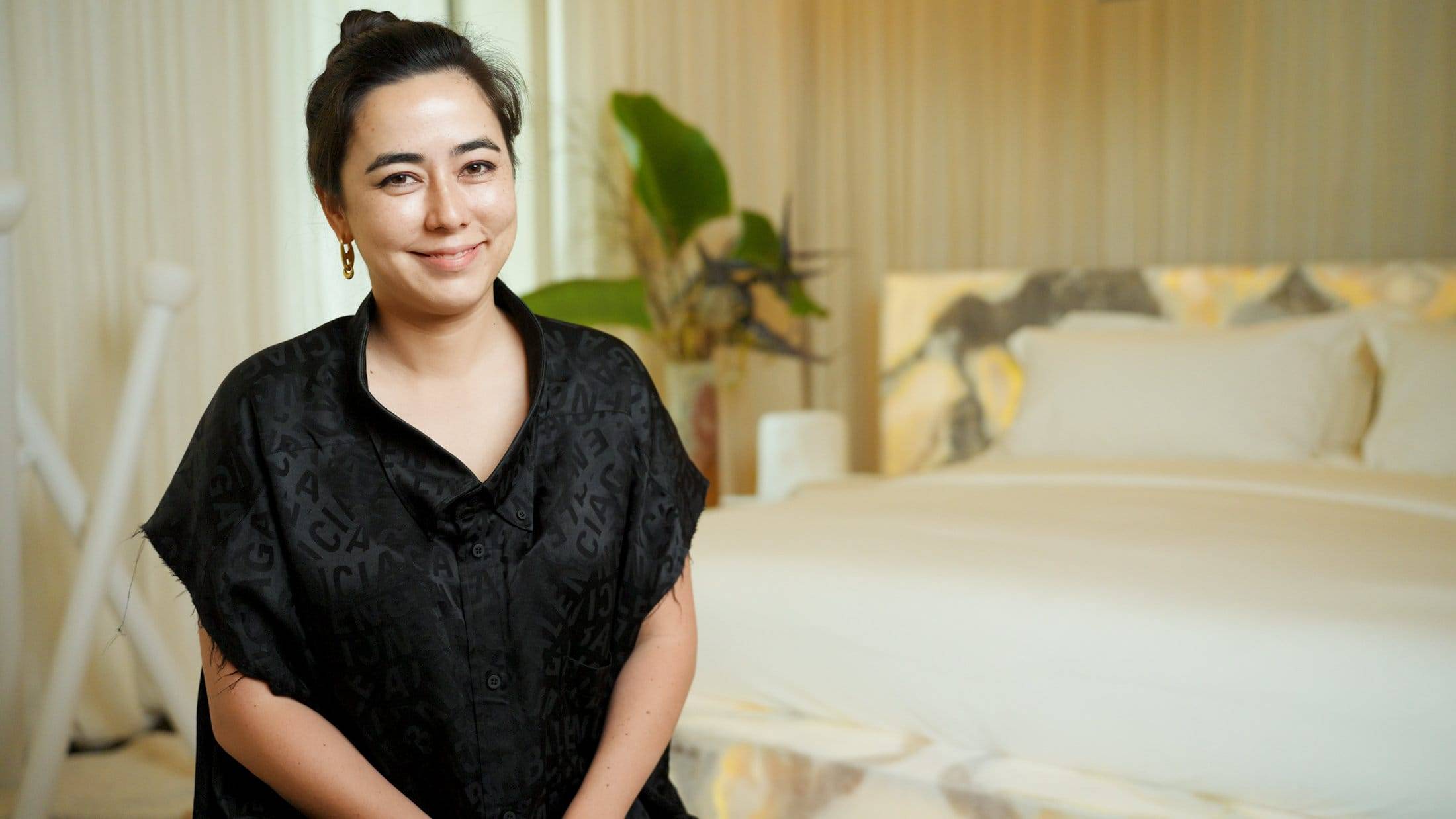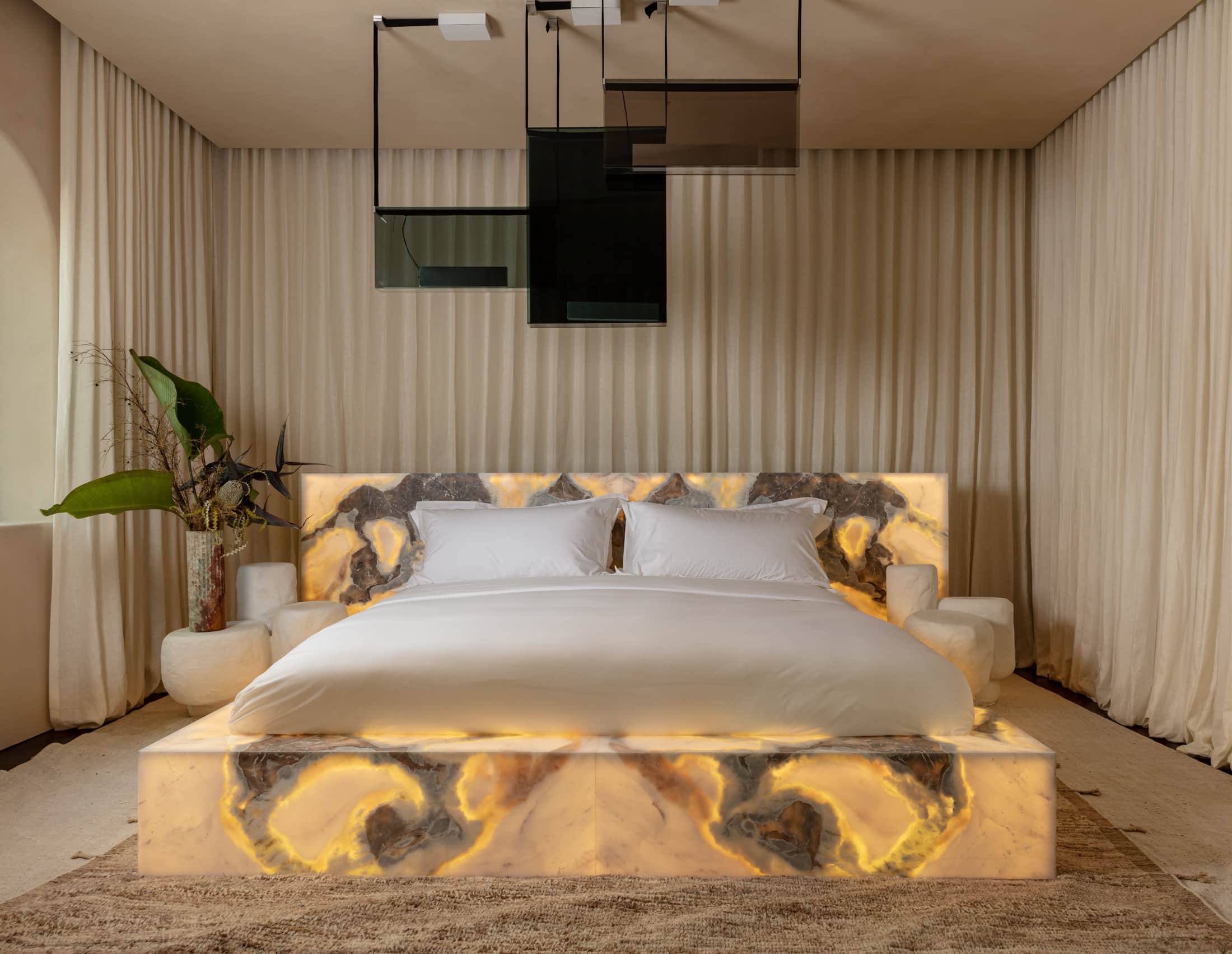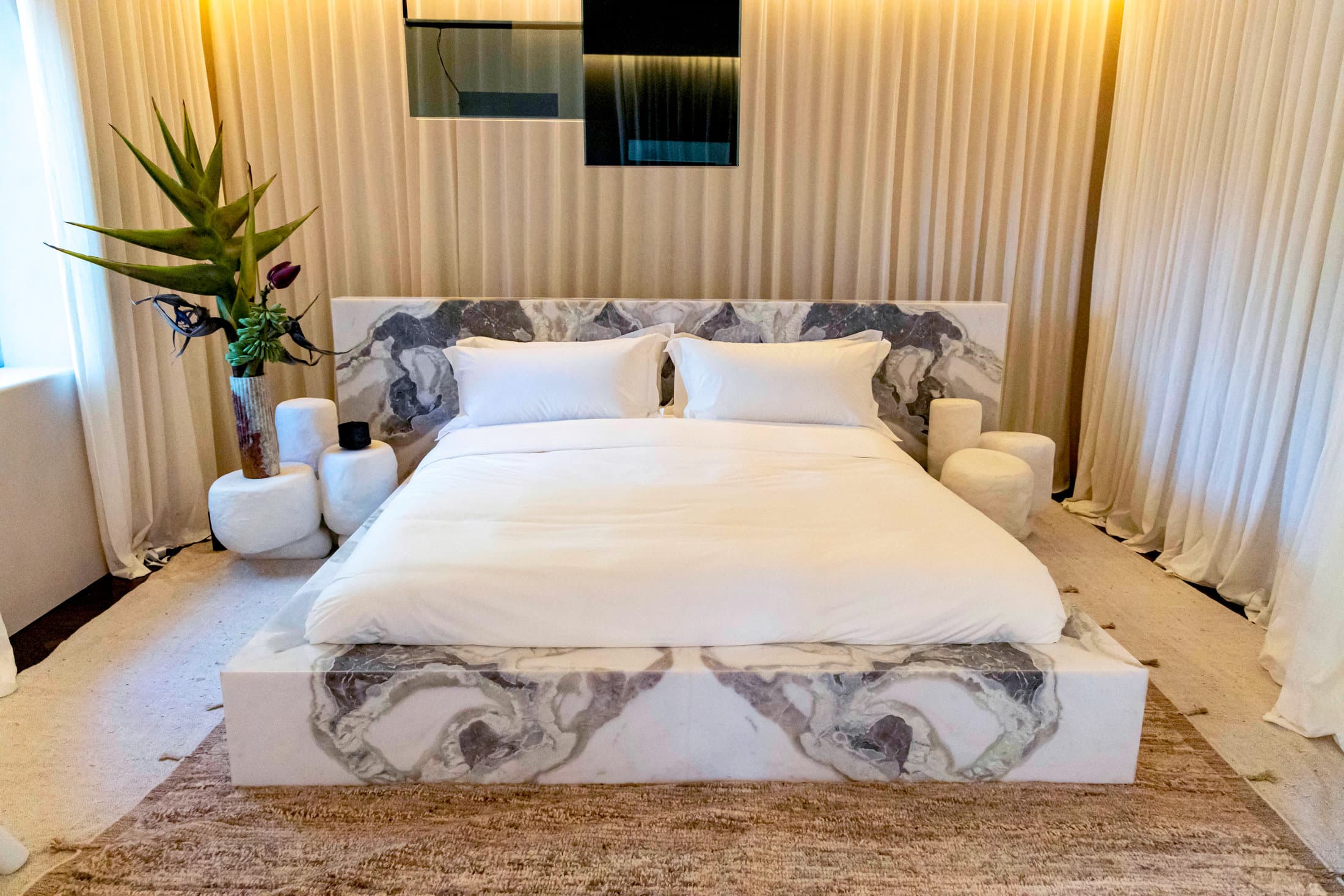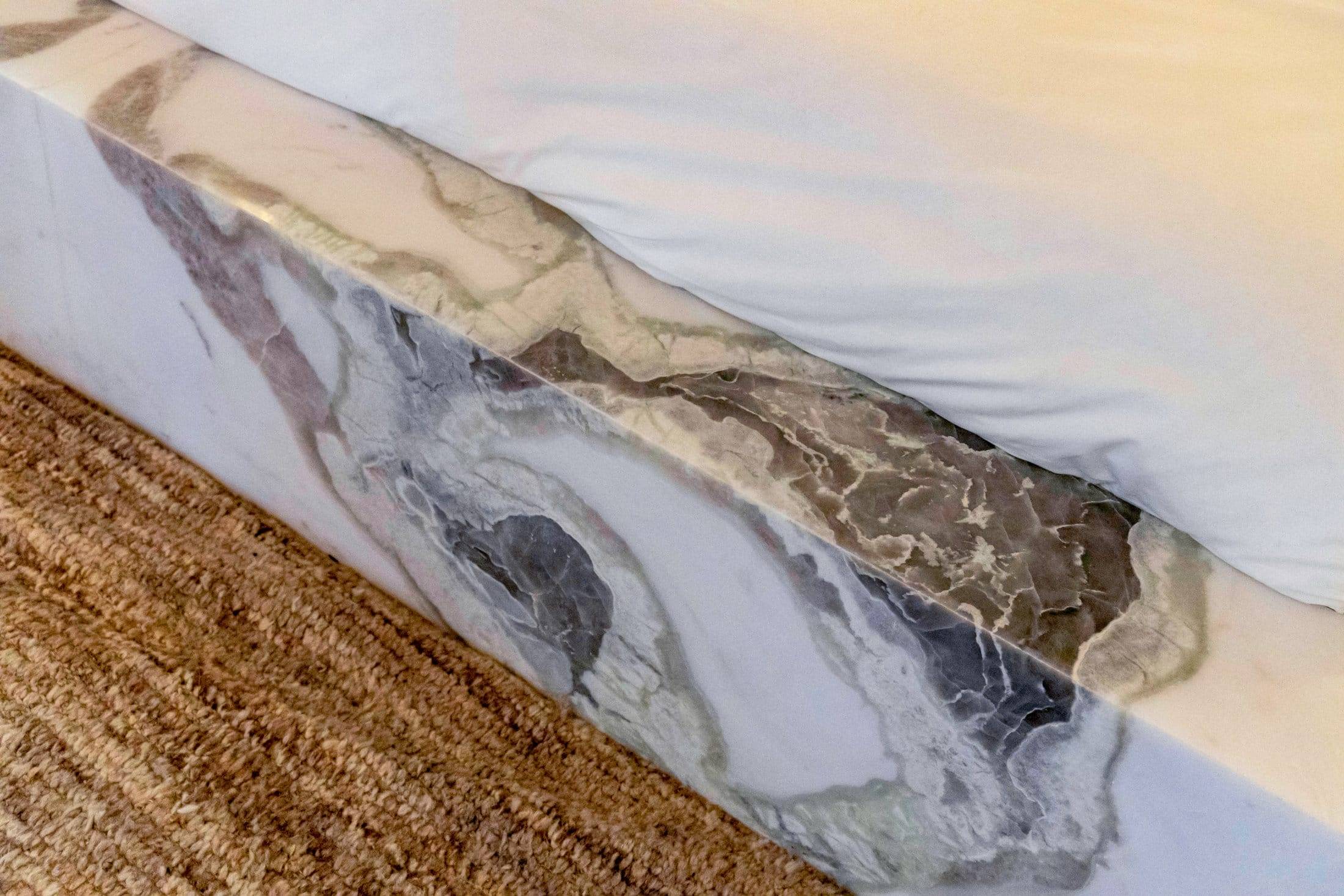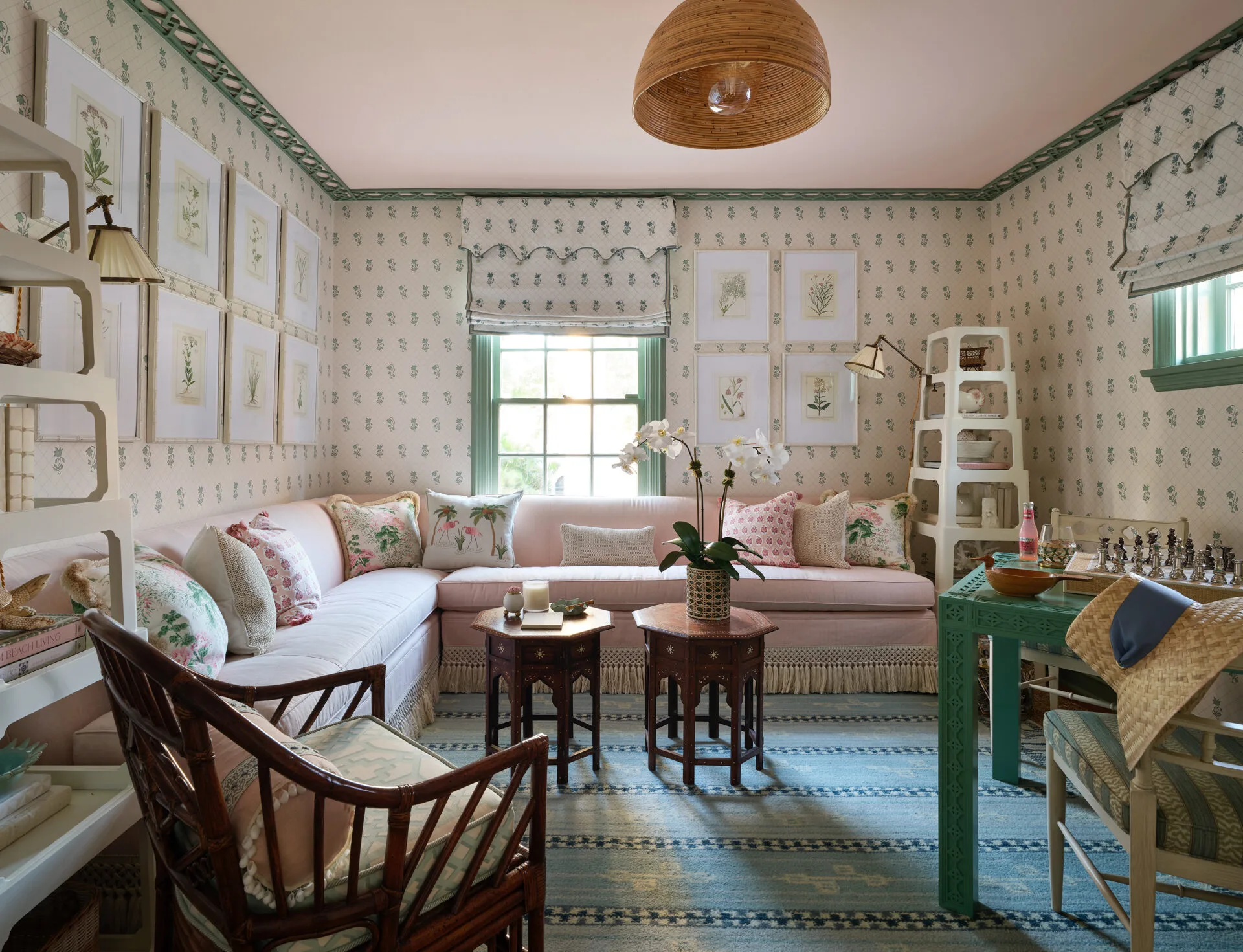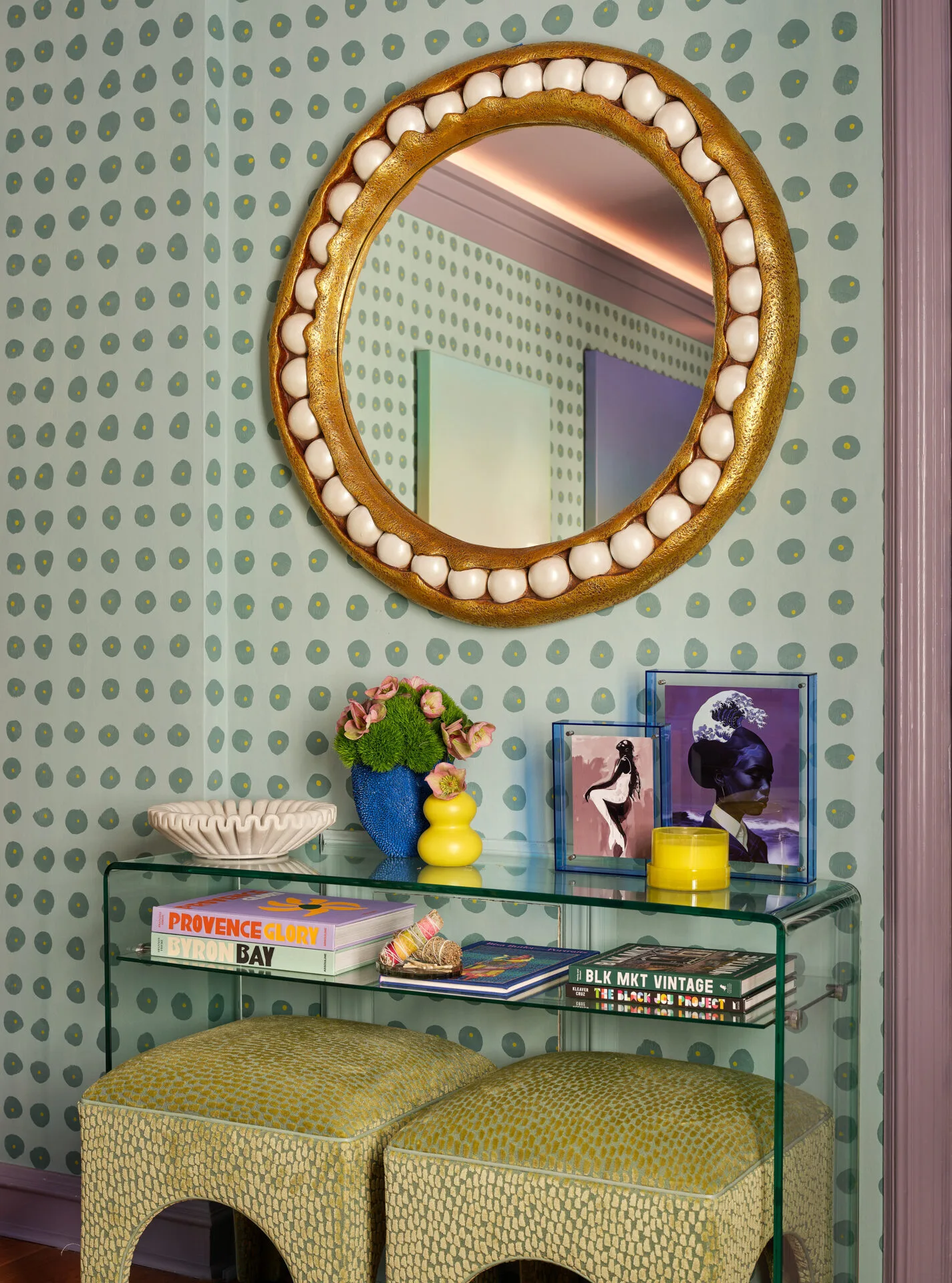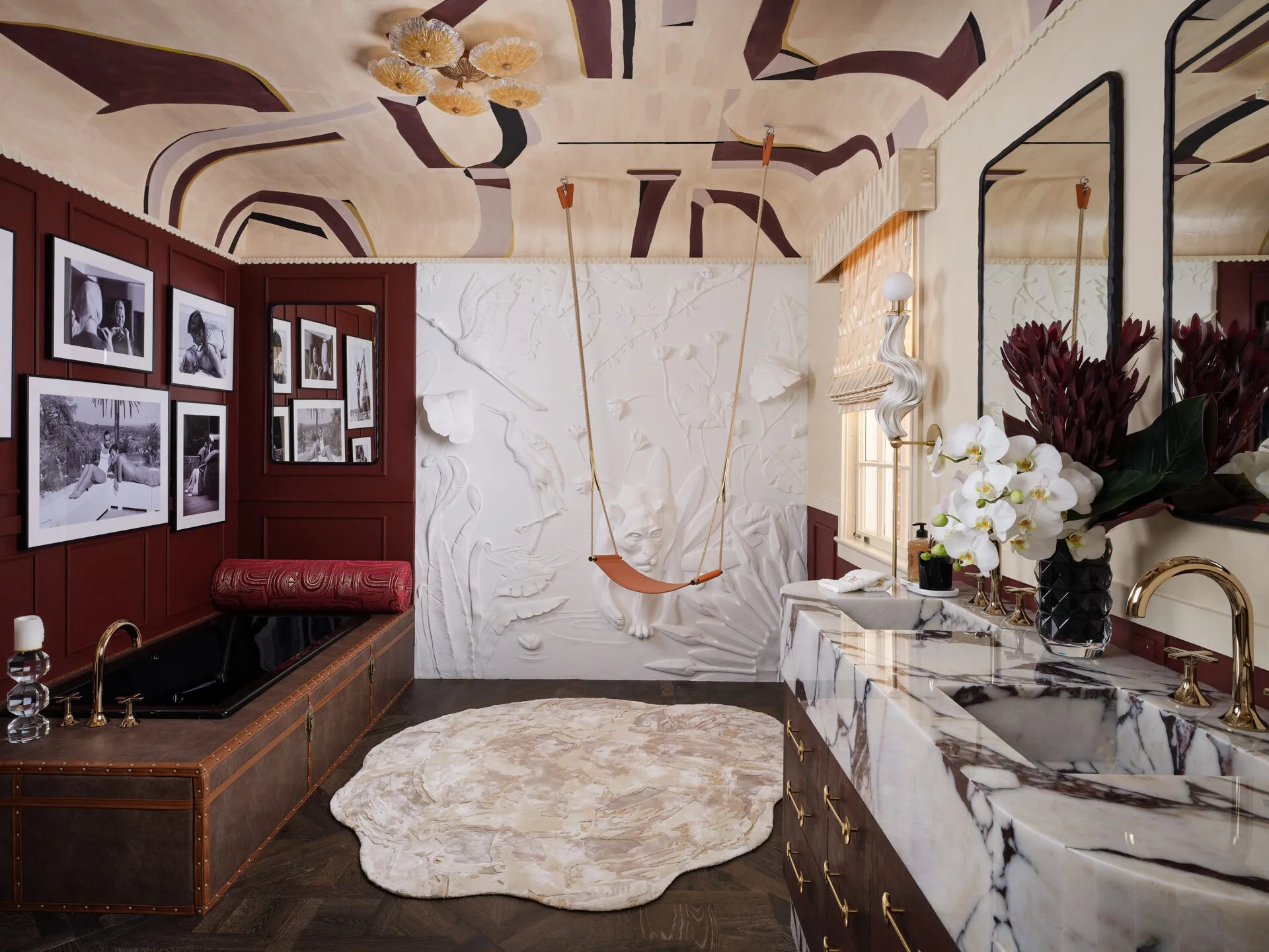Megan Grehl
(Q) Let’s start with your name, your company, and your room. Tell us a little bit about yourself and your interests.
A: My name is Megan Grehl. I'm the founder and principal of Megan Grehl Studio, a 15 person office based out of New York. We also have an office in Miami, and we are participating in Kips Bay this year to sort of expand our presence in Florida. The way we approach design is very sculptural. We love really big moments, and then kind of contrasting that with very subtle subtlety and textures, color material, everything needs to have like, a very harmonious balance. For this room, we really made the bed the star of our show with the Oyster Select Marble. I love how beautiful and all the nuances in the stone are really incredible. The lilac tones, the greens. Just as you move and as you read the bed across the room, it really changes from all the different perspectives.
A: My name is Megan Grehl. I'm the founder and principal of Megan Grehl Studio, a 15 person office based out of New York. We also have an office in Miami, and we are participating in Kips Bay this year to sort of expand our presence in Florida. The way we approach design is very sculptural. We love really big moments, and then kind of contrasting that with very subtle subtlety and textures, color material, everything needs to have like, a very harmonious balance. For this room, we really made the bed the star of our show with the Oyster Select Marble. I love how beautiful and all the nuances in the stone are really incredible. The lilac tones, the greens. Just as you move and as you read the bed across the room, it really changes from all the different perspectives.
(Q) What does Kips Bay mean to you? What does it mean to be a designer for this showhouse?
A: To me, Kips Bay is really the epitome of the best designers either in South Florida or New York. Now, they also have one in Dallas. It's a very prestigious event, probably the most prestigious show house in the country. It's a great way to showcase what designers can do given a very short timeline and budget constraints. Essentially, the client has no parameters. They let us do whatever we want, however we want. It's a great way to show the true potential of unlimited design.
Oyster White Marble Illuminated Bedframe
A: To me, Kips Bay is really the epitome of the best designers either in South Florida or New York. Now, they also have one in Dallas. It's a very prestigious event, probably the most prestigious show house in the country. It's a great way to showcase what designers can do given a very short timeline and budget constraints. Essentially, the client has no parameters. They let us do whatever we want, however we want. It's a great way to show the true potential of unlimited design.
(Q) Tell us about your room and the inspiration behind the design?
A: Our design concept is called the Silent Coast. So, you know, being in Palm Beach, we really wanted to reference the ocean, but not your typical sort of more traditional ways of expressing the ocean, like via seashells or marine life. We really wanted to hone in on that by showing the rawness of the materials. If you think about your experience in the ocean, you might think about sand or waves, these are all inspirations for our room. The undulating curtains, the softness of the curtains, all sort of trying to emulate the ripple effect of the ocean. The bed is like really raw, this really raw natural material, the Oyster White marble. That's supposed to really sort of highlight all the beautiful materials that you can find by the seaside as they wash up over time. The marble has been aged for hundreds, even thousands of years and that gives it a sense of timelessness. That's sort of what you experience.
A: Our design concept is called the Silent Coast. So, you know, being in Palm Beach, we really wanted to reference the ocean, but not your typical sort of more traditional ways of expressing the ocean, like via seashells or marine life. We really wanted to hone in on that by showing the rawness of the materials. If you think about your experience in the ocean, you might think about sand or waves, these are all inspirations for our room. The undulating curtains, the softness of the curtains, all sort of trying to emulate the ripple effect of the ocean. The bed is like really raw, this really raw natural material, the Oyster White marble. That's supposed to really sort of highlight all the beautiful materials that you can find by the seaside as they wash up over time. The marble has been aged for hundreds, even thousands of years and that gives it a sense of timelessness. That's sort of what you experience.
(Q) When designing this room, what was the most important factor for you?
A: The most important factor to me is that we wanted to create a very dramatic punch. We wanted to show a very dramatic before and after. We actually built out the walls of this room, four inches from the ceiling and four inches from the side, that's why when you come into our room, it actually feels completely different than the rest of the house. That was very intentional. We wanted to completely change the lighting experience in the room, so you see ambient lighting emanate from the perimeter. We also wanted to have light coming from the star of our show, which is the bed, and have a very dimmable led lighting experience on the bed. We wanted to surprise our visitors, we wanted them to see something they've never seen before. That is why we went into so much trouble to make this incredible bed with three slabs of Oyster White marble. Everyone who's come into our room has been very, very, pleasantly surprised and that's definitely the effect we wanted to achieve.
Oyster White Marble Illuminated Bedframe
A: The most important factor to me is that we wanted to create a very dramatic punch. We wanted to show a very dramatic before and after. We actually built out the walls of this room, four inches from the ceiling and four inches from the side, that's why when you come into our room, it actually feels completely different than the rest of the house. That was very intentional. We wanted to completely change the lighting experience in the room, so you see ambient lighting emanate from the perimeter. We also wanted to have light coming from the star of our show, which is the bed, and have a very dimmable led lighting experience on the bed. We wanted to surprise our visitors, we wanted them to see something they've never seen before. That is why we went into so much trouble to make this incredible bed with three slabs of Oyster White marble. Everyone who's come into our room has been very, very, pleasantly surprised and that's definitely the effect we wanted to achieve.
(Q) What kind of vibe and aesthetic were you aiming to achieve in the project?
A: When I describe our design philosophy, I say that we're not maximalist, but we're not minimalists either. I like to call our design ethos more of a reductionist method. If you think of culinary experience, you know, when you're making a reduction, you're really boiling it down to its essence. You're distilling this flavor to get back to its most potent but pure moment as you're cooking. That's how we really like to approach design, we like to distill it to what is the big moment, what is the true essence of this design, and then making sure that the user uses their five senses to completely focus on that exact moment and then everything else needs to be calm around it. So it's really about balance. Being a person of mixed culture myself, I think there's beautiful parts of all different cultures and all of the different styles and designs and finding that harmonious balance is something that we really like to strive for in our design.
A: When I describe our design philosophy, I say that we're not maximalist, but we're not minimalists either. I like to call our design ethos more of a reductionist method. If you think of culinary experience, you know, when you're making a reduction, you're really boiling it down to its essence. You're distilling this flavor to get back to its most potent but pure moment as you're cooking. That's how we really like to approach design, we like to distill it to what is the big moment, what is the true essence of this design, and then making sure that the user uses their five senses to completely focus on that exact moment and then everything else needs to be calm around it. So it's really about balance. Being a person of mixed culture myself, I think there's beautiful parts of all different cultures and all of the different styles and designs and finding that harmonious balance is something that we really like to strive for in our design.
(Q) What did the stone help you accomplish in your overall design? What drew you to the stone you selected?
A: As I was walking through Prime Stones Warehouse, I loved seeing all these unusual stones that I had never seen before. The oyster white marble was definitely something that really surprised me and that I was immediately drawn to it was like love at first sight. I had a very visceral reaction when I saw the Marble because parts of it are translucent, parts of it are murky, some of it is solid and that contrast of like all the different tones and colors, there's a slight hint of green within the marble. But when the lights are off, actually it's difficult to really perceive. So when I saw the marble, I knew that we had to find a way to backlight and bring out those hints of green and lilac and I love the color palette. I think it's beautiful. We wanted to use LEDs to really highlight all of that different texture.
Oyster White Marble
A: As I was walking through Prime Stones Warehouse, I loved seeing all these unusual stones that I had never seen before. The oyster white marble was definitely something that really surprised me and that I was immediately drawn to it was like love at first sight. I had a very visceral reaction when I saw the Marble because parts of it are translucent, parts of it are murky, some of it is solid and that contrast of like all the different tones and colors, there's a slight hint of green within the marble. But when the lights are off, actually it's difficult to really perceive. So when I saw the marble, I knew that we had to find a way to backlight and bring out those hints of green and lilac and I love the color palette. I think it's beautiful. We wanted to use LEDs to really highlight all of that different texture.
(Q) Is there anything else that you would like to add?
A: I'll talk a little bit more about the bed. Very few people have seen a stone bed in their lifetime. The goal of this bed was really to create the ultimate luxurious experience. You don't normally automatically think of stone to use on a bed or stone furniture. In general, people think of stone as a very hard material, like an uninviting material. What we're trying to show here is that it can actually be a very inviting, sort of almost cocoon-like, womb-like experience. It's such a beautiful centerpiece of our room, it's really like a piece of art and that's how we like to approach our design. It's about having beautiful objects within your home, natural raw objects from the earth. But using those materials in a design way to highlight and encapsulate the true potential of these materials.
A: I'll talk a little bit more about the bed. Very few people have seen a stone bed in their lifetime. The goal of this bed was really to create the ultimate luxurious experience. You don't normally automatically think of stone to use on a bed or stone furniture. In general, people think of stone as a very hard material, like an uninviting material. What we're trying to show here is that it can actually be a very inviting, sort of almost cocoon-like, womb-like experience. It's such a beautiful centerpiece of our room, it's really like a piece of art and that's how we like to approach our design. It's about having beautiful objects within your home, natural raw objects from the earth. But using those materials in a design way to highlight and encapsulate the true potential of these materials.


